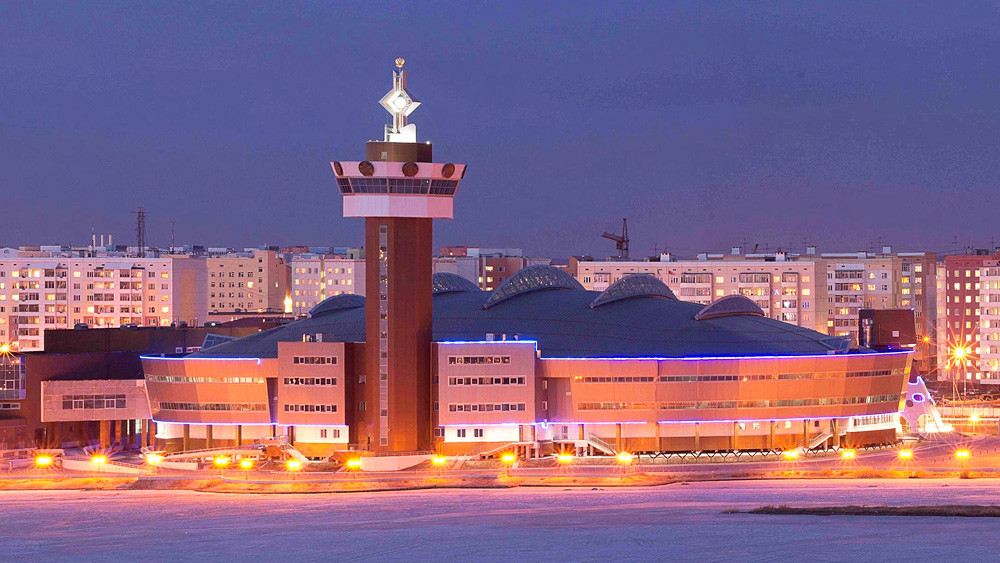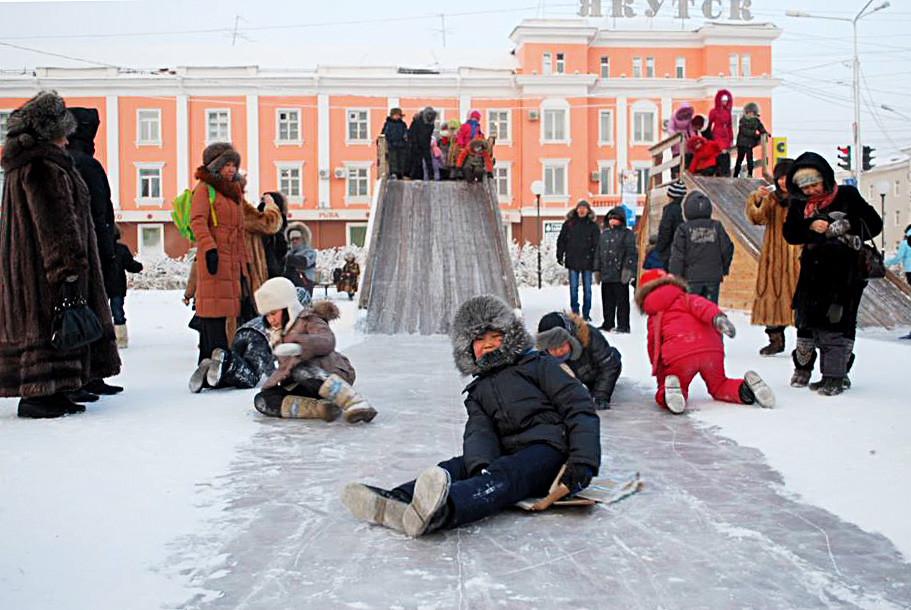How Russians build cities on permafrost (PHOTOS)
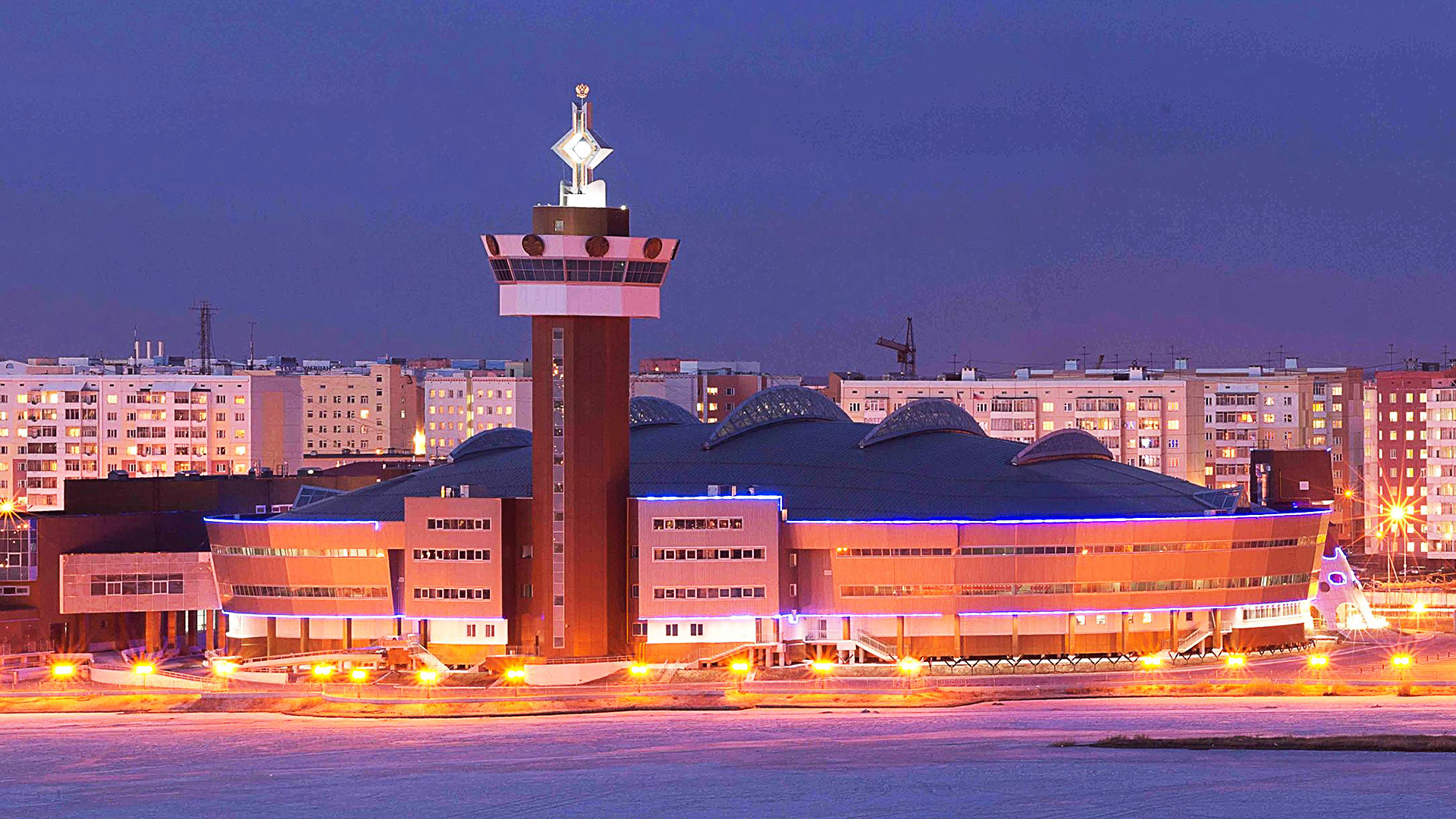
Almost the entire north-eastern part of Russia is covered with permafrost. Despite the harsh climate, towns and cities still get built here.
Yakutsk is the largest city in the world sited on permafrost, home to over 300,000 souls. Despite the severe weather conditions, the population increases year on year, and the city itself is expanding: new residential areas and modern public spaces with a Far North flavor are popping up all the time
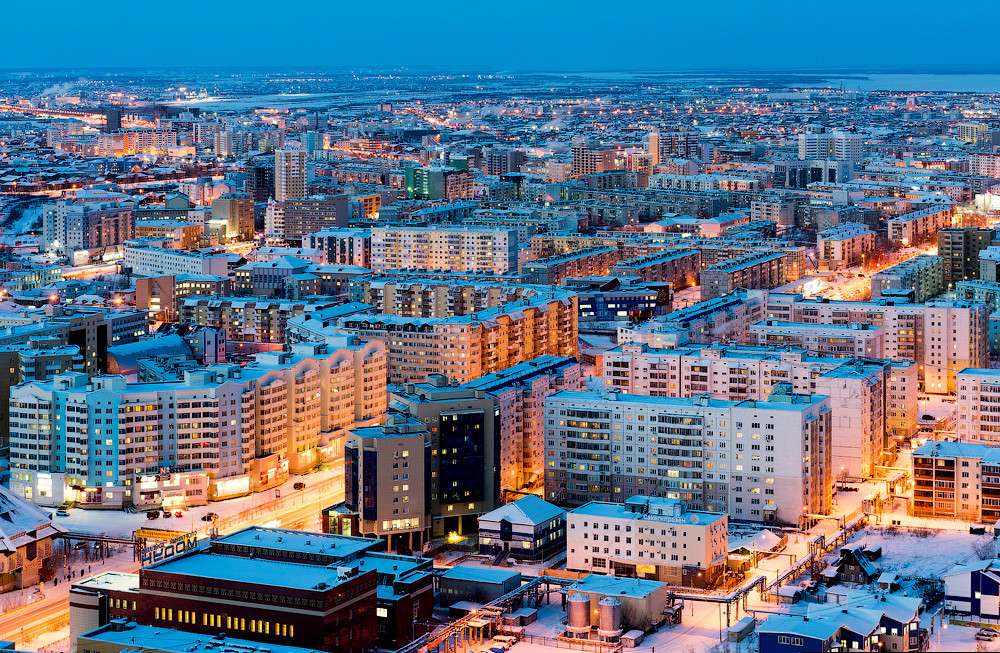
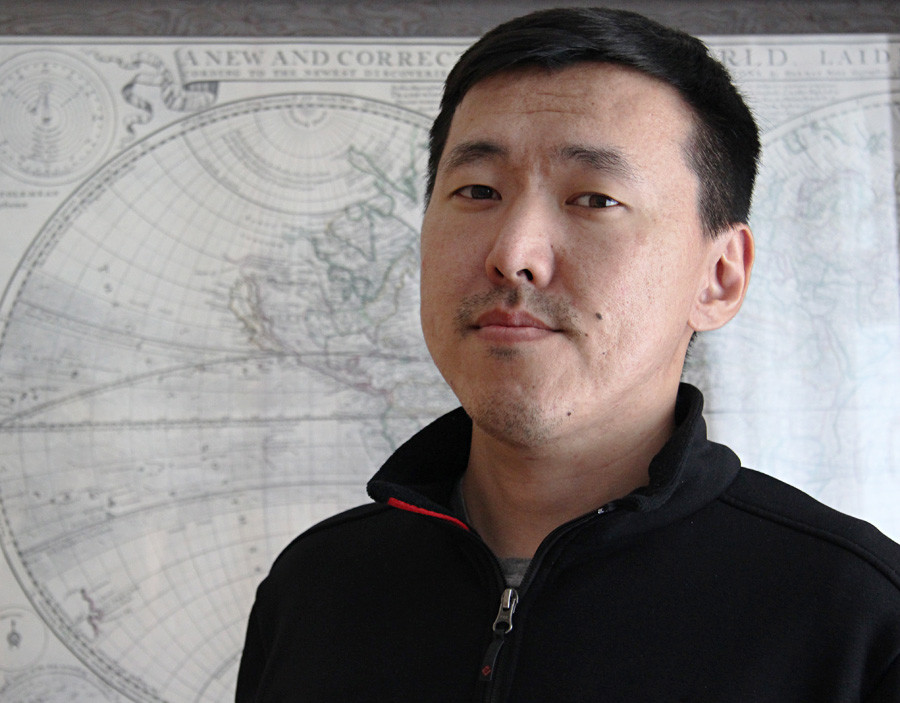
Sergey Permyakov
Personal ArchiveNumber one tip, don’t dig!
The Republic of Sakha-Yakutia is the largest (one-fifth of the country’s area) and coldest region of Russia. The climate here is sharply continental, which means that winter temperatures of -50 C (even -60 C) will surprise no one, while summers are a balmy +30 C. Given such a temperature gradient, the most important thing is to preserve soil stability, otherwise buildings and roads would go underground in the truest sense of the word. And this means that the permafrost cannot be allowed to melt.
“The first rule of the Far North is that nothing can be dug into the ground,” says Sergey. All pipes, heating lines, etc. must run overland and become part of the urban landscape. “We’d love to make use of them architecturally, say, for lighting, but so far it’s only on the drawing board,” says Sergey.
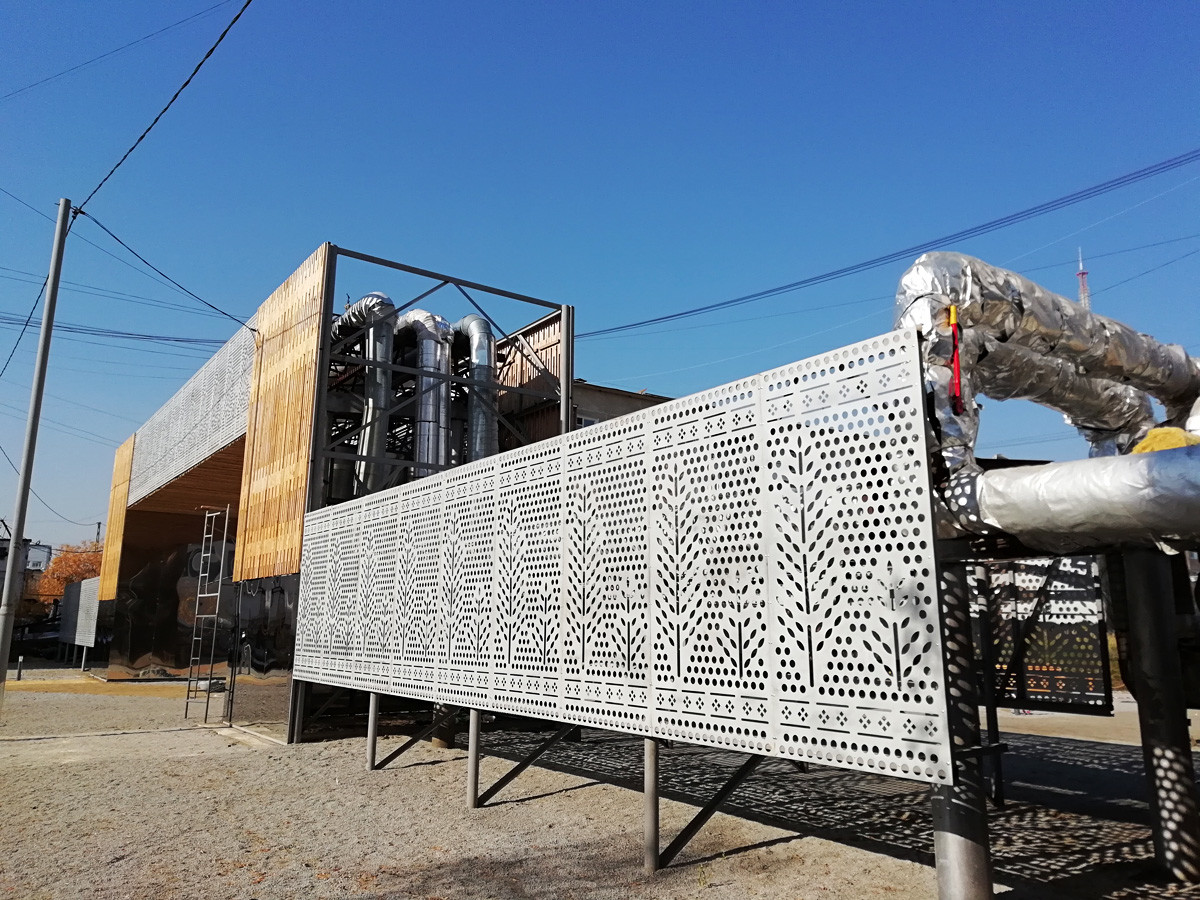
Designer heating pipes.
Sergey PermyakovAll buildings in Yakutsk stand on stilts to prevent the warmth they generate from melting the permafrost. Here too is the largest
Colorful buildings Yakutsk-style
Yakutsk was founded by Cossacks in the 17th century, and the city is dotted with buildings from different epochs: preserved in the center are old merchant houses and churches, while the dormitory suburbs are packed with typical Soviet high-rise buildings, only this time on stilts. What's more, new residential neighborhoods are appearing in Yakutsk with a distinctly northern flavor: for example, there is a development project to build houses in the form of a mammoth tusk.
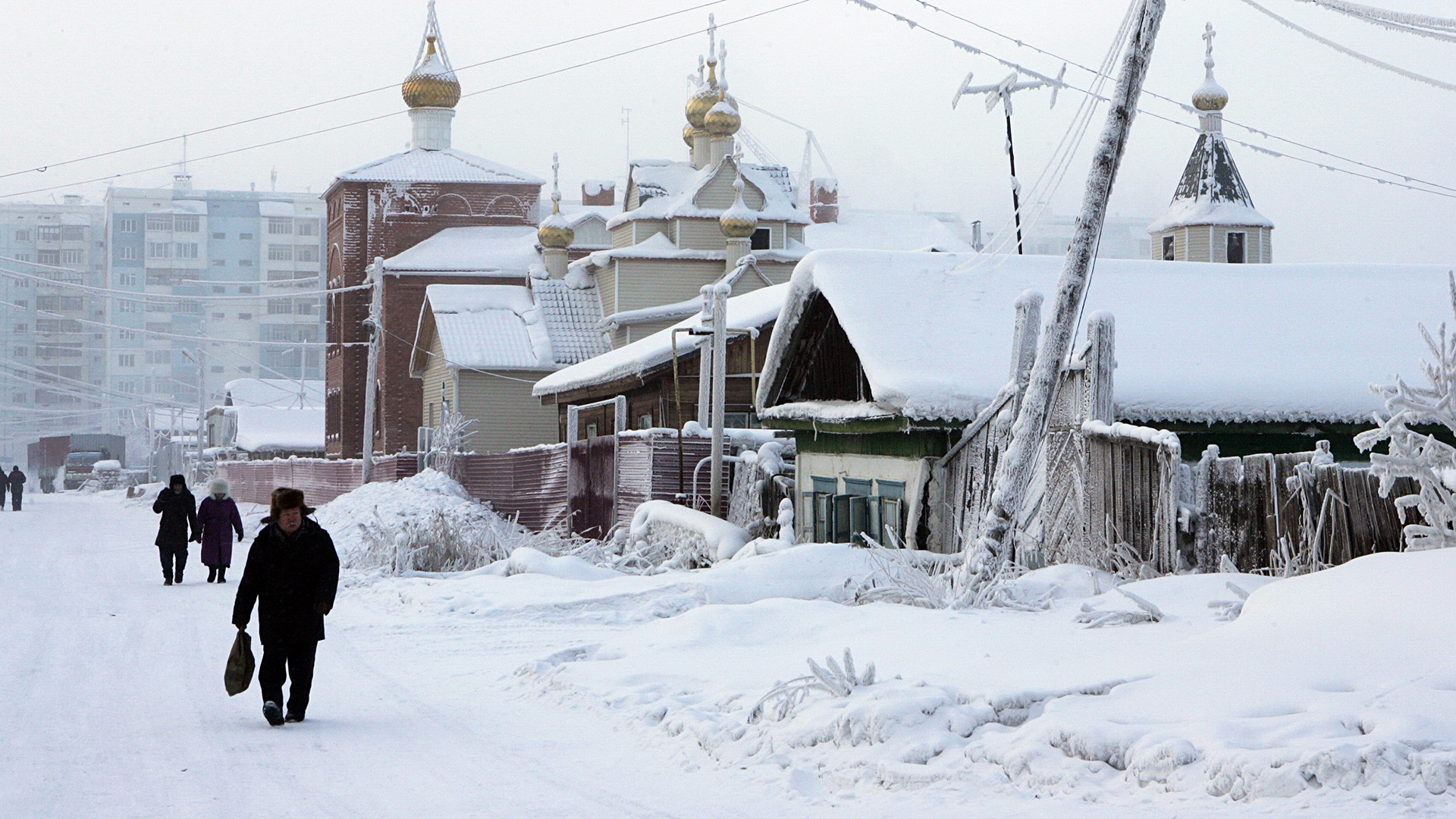
The old town in winter.
KommersantAs in other northern Russian cities, the buildings are painted in bright colors in the belief that it helps to fight depression when the sun is hibernating and to navigate the streets in conditions of frosty fog
In new residential complexes, children’s play areas are generally built not on the ground, but on the roof of the first floors, since the cold makes the construction materials brittle and unlikely to survive the winter
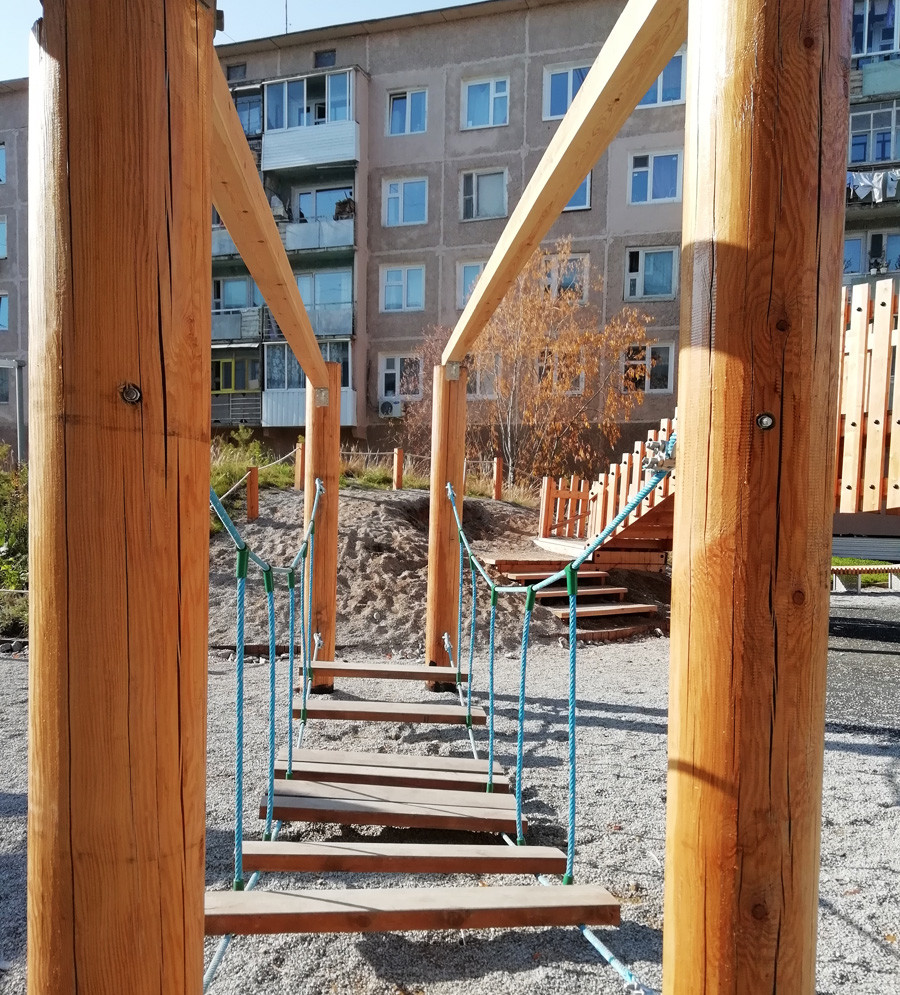
Wooden playground in the yard.
Sergey PermyakovHow to solve the transport problem at -50 C
“The permafrost in Yakutsk means there are no underground parking lots. Instead, they are built on the first floors of buildings,” says Sergey
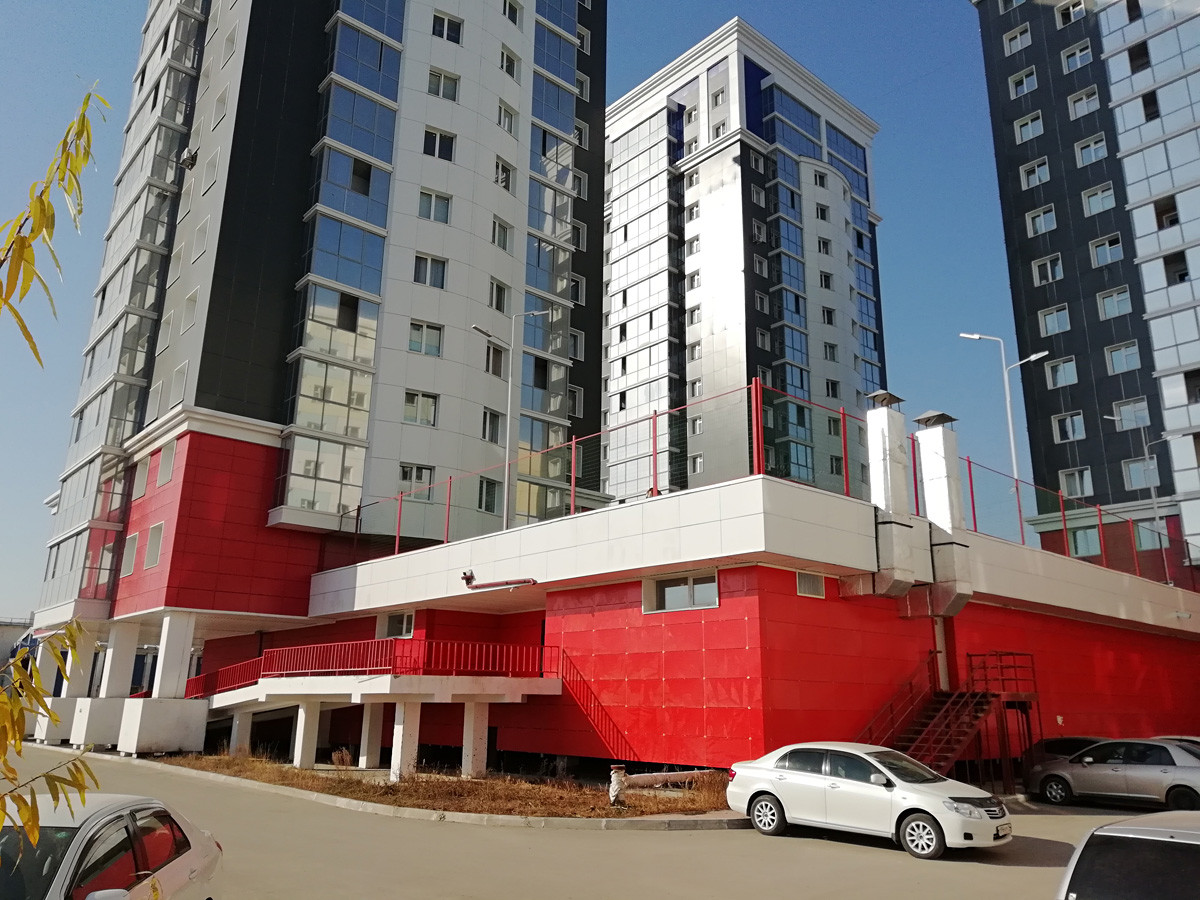
Parking lot on stilts.
Sergey Permyakov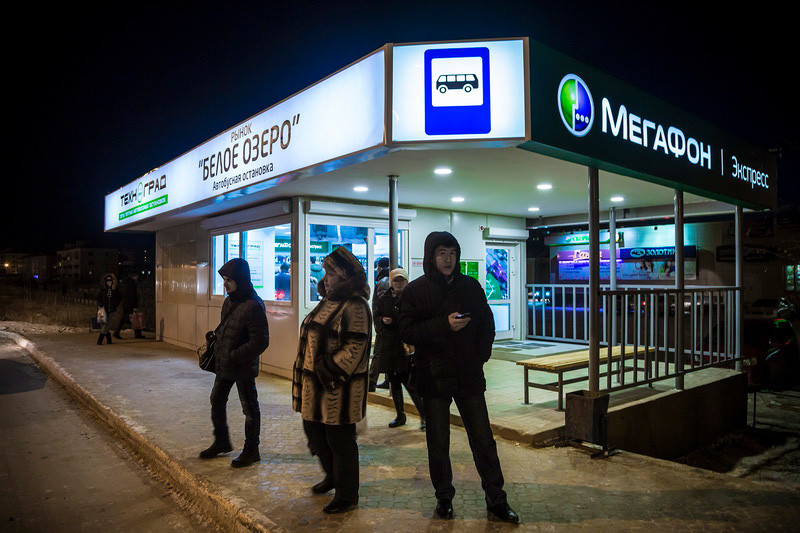
Not your average bus stop.
Yakutsk regional branch of the all-Russian council of the local self-government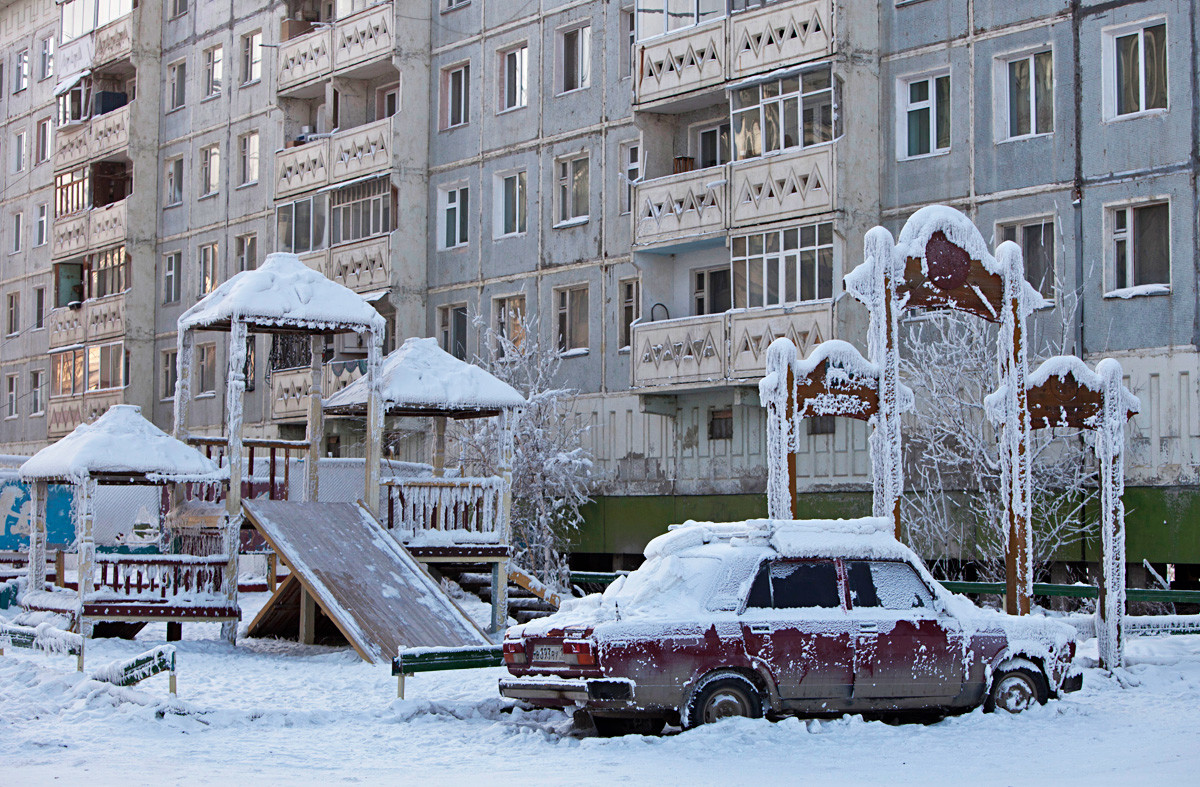
Frozen car in a yard.
ReutersYakutsk vs. dust
The main summer problem in the city is dust — Yakutsk has very dry air, lots of dirt roads and

The melting of permafrost aftermath.
Sergey Permyakov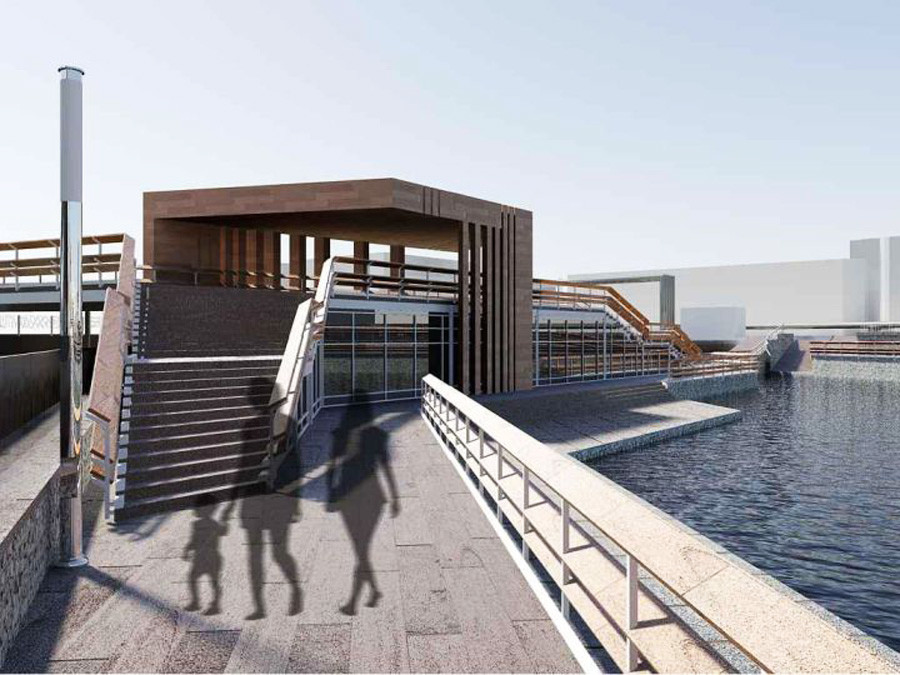
Lake Taloe.
Yakutsk city administrationAnother public space, “Gates of Yakutsk,” is set to appear near the airport. A stylized life-size model of a Siberian fort, it will greet all visitors to Yakutsk who are not afraid of the cold.
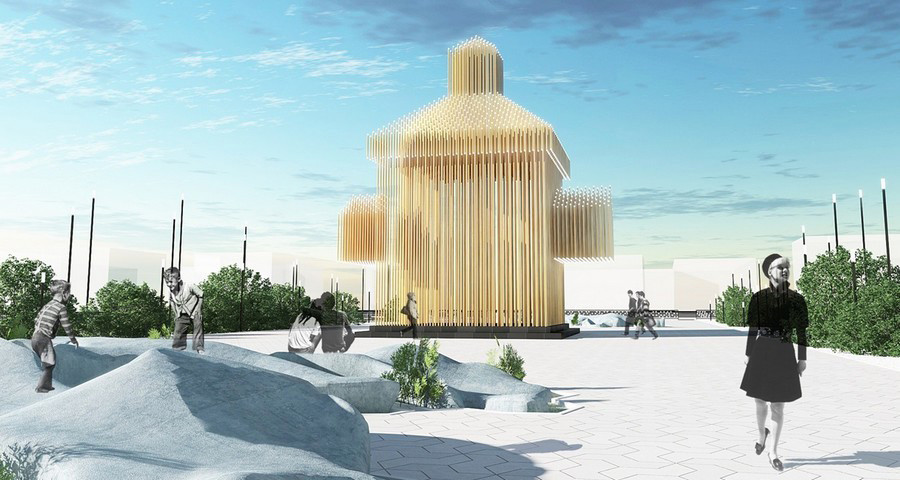
Gates of Yakutsk.
Yakutsk city administrationIf using any of Russia Beyond's content, partly or in full, always provide an active hyperlink to the original material.
Subscribe
to our newsletter!
Get the week's best stories straight to your inbox
